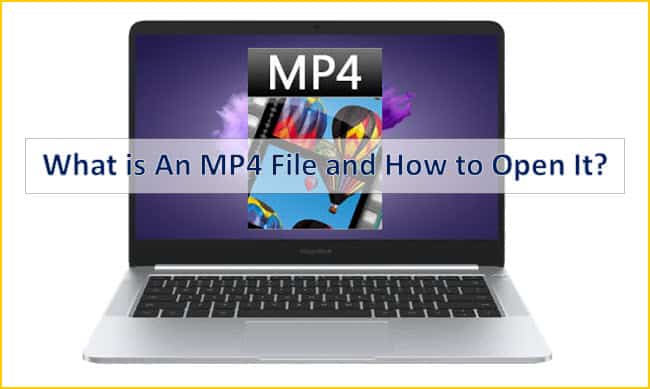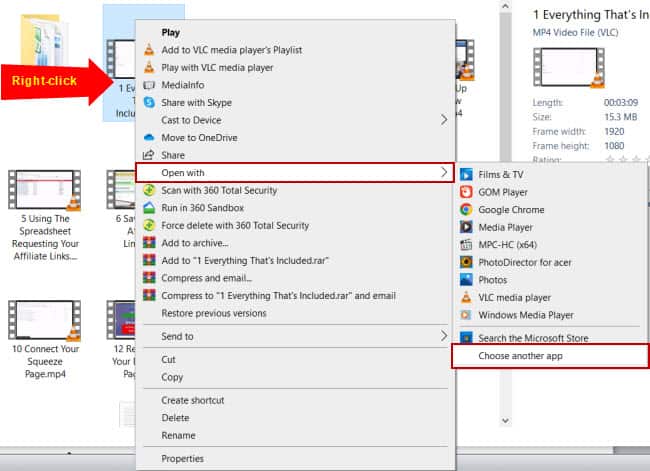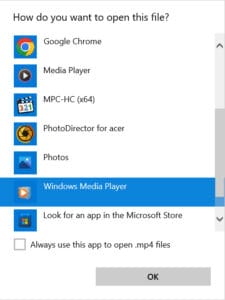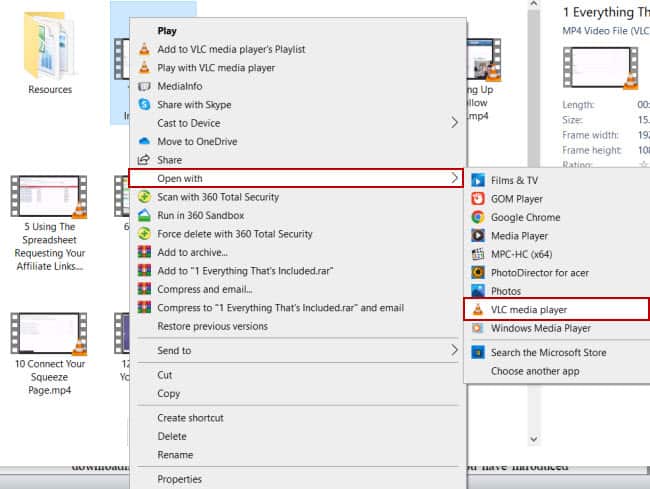Last updated on April 24th, 2024
This site is reader-supported. When you buy via links on our site, we may earn an affiliate commission at no extra cost to you.
What is an MP4 File?
MP4 file is a multimedia container format used to store audio, video & other data including images, subtitles, and chapters. It was a standard developed by the MPEG (Motion Picture Experts Group). A file with .mp4 (file extension) is an MPEG-4 video file format.
MP4 files can contain both compressed and uncompressed audio and video streams. It uses a video codec like H.264 as well as AAC for audio to reduce the file size while still maintaining the media output quality.
This makes MP4 files suitable for streaming over the internet, sharing video content on various platforms, and storing on portable devices with limited storage capacity.

The Strengths and Limitations of MP4 File Format
Let’s see what are the pros and cons of MP4 files. Of course, the MP4 formats have many advantages and this makes it one of the most popular media formats in the market.
Advantages:
MP4 file has become one of the most popular file formats for multimedia content for several reasons, among them are:
- Wide compatibility
The MP4 file is supported by a wide range of media devices & players (including software), and streaming platforms, making it easy to play and share MP4 files across different devices like computers, smartphones, tablets, gaming consoles, and smart TVs.
- High Compression
It uses advanced video compression codecs like H.264 and H.265, allowing for a significant reduction in the output file size while still maintaining the quality. So, it’s good for backup while saving storage space.
- Versatility
You can use the MP4 file for streaming, editing, or broadcasting. You can package video content with user navigation options, mix video with visual elements, the animation layers in 2D & 3D, etc.
- Editing Flexibility
MP4 files can be easily imported into video editing software, letting you efficiently edit, trim, cut, or other editing of the contents without significant loss in quality.
Disadvantages:
- Resource-intensive
Playback or editing the MP4 files required more processing power than other file formats as MP4 contains various media data and metadata.
- Possible Illegal Distribution
The popularity and convenience of the MP4 format make people easily distribute copyrighted media content, i.e. rip copy-protected DVDs to MP4 format.
- Drop Video Quality
MP4 compression results in good output quality videos but they are not a format if you are looking for HD or UHD videos.
What Devices Support MP4 File Format?
The MP4 file can be widely supported by various devices and platforms. The following are the popular devices that support MP4 file format:
1. Computers
You can play MP4 files from your Windows PCs (laptop or desktop), Mac OS, and Linux system with the correct media players installed such as VLC media player, Windows media player, and more.
2. Smartphones and Tablets
Most portable devices support MP4 playback. These include iOS devices Apple iPhone, iPad, iPod, etc., and Android devices from Samsung, Sony, Oppo, Huawei, and more. You can use mobile apps like VLC for mobile, and MX player for playbacks.
3. Smart TVs and TV Box
Many smart TV brands have built-in support for MP4 playback like Samsung, Panasonic, Sony, LG, and more. The MP4 videos can be loaded through a USB port.
For non-smart TVs, you still can watch streaming MP4 videos in VP8, VP9, H.264, or even H.265 with a TV box connected via the HDMI port.
4. Gaming Consoles
No doubt that the newer PlayStation 4 (PS4), PlayStation 5 (PS5), Xbox One, and Xbox Series X/S, support MP4 playback. These consoles often have media player apps or can play MP4 files through USB drives or streaming services.
5. Media Players
The modern DVD and Blu-ray players support MP4 playback. Some models are equipped with USB ports that can connect to external devices.
It’s worth noting that while MP4 is widely supported, the specific codec used within the MP4 file can impact compatibility. Commonly used codecs include H.264/AVC and H.265/HEVC, which are widely supported by most devices.
How to Open an MP4 File on Windows or Mac OS X?
To open an MP4 file, you just need a suitable media player that can play the MP4 files installed on your computer. As the MP4 format is very common and popular, any media players that are installed on your computer mostly can support the format.
Method 1: Using the Windows Media Player
The Windows Media Player is a default program that exists on all Windows computers. You can use it to play most of the video files including the MP4 format.
- Double-click on the Video’s File
This is the normal method that can easily open the MP4 file. Just double-click on the MP4 file and Windows will use the default video player to open the file.
How to set or change the default video player?
The default video player means every time when you double-click on a video, the player will open and play the video (provided the player supports the file formats). Here are the steps on how to set the default player:
- Right-click on any video file, point to “Open with” and click on “Choose another app”.

- From the new dialog box, choose the program that you want to use to open the media files. In this case, we choose “Windows Media Player” and tick the option “Always use this app to open .mp4 files”. Then, click on the “OK” button.

Once you do the above settings, the next time when you double-click on the .mp4 files, your computer will automatically use the “Windows Media Player” to open the files.
Method 2: Using Third-Party Media Players
- Right-click on Video’s File
On the off chance that you run the Windows OS, rather than double-click on the MP4 file likewise, you can right-click on the file and choose what media player you might want to use to play the video.
- Right-click on any video file, point to “Open with” and click on any program that you want to use to open the video file (provided you already installed the programs before).
- For example, we choose the “VLC media player” and the MP4 video will open using the application.

Sometimes, you may fail or be unable to open the MP4 video file for certain reasons. In that case, the best way is to convert the MP4 to other formats using a video converter. For example, you can convert MP4 to MKV or any format you prefer.
Else, if the MP4 files were corrupted, you can use some tools to repair or fix the files as explained in this article.
Conclusion
An MP4 file is a versatile digital container format that is popular for storing and sharing video, audio, and other data.
The flexibility of the MP4 format makes it an indispensable format for modern digital media, empowering users to enjoy and share their favorite media with ease across social media or video-sharing sites.
You also can easily open MP4 files with a wide range of media players, both desktop-based and mobile devices/gadgets.
Frequently Asked Questions (FAQs)
1. Why can’t I open an MP4 file?
The most obvious reason is that the MP4 file is corrupted. Else, maybe the media players don’t have the proper codecs to run the MP4 format. You can try to open the MP4 files with a VLC media player.
2. What is the difference between MP4 and MPEG-4?
MP4 is the digital container file and MPEG-4 is the standard for encoding the video content within MP4 files. The video content inside an MP4 file is encoded using the MPEG-4 standard.
3. Can MP4 be played on any device?
MP4 is a popular format that is playable on most devices including PC, Mac, Apple and Android devices, Game Consoles, and Smart TVs.
4. What are the recommended media players to play MP4 files?
Some of the recommended players include VLC Media Player, GOM Player, KMPlayer, Real Player, and Windows Media Player.
